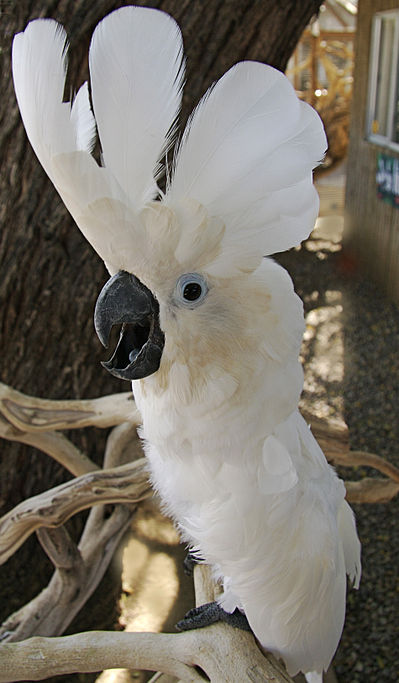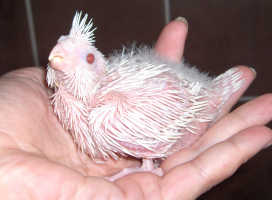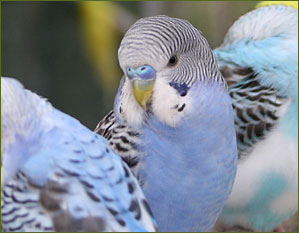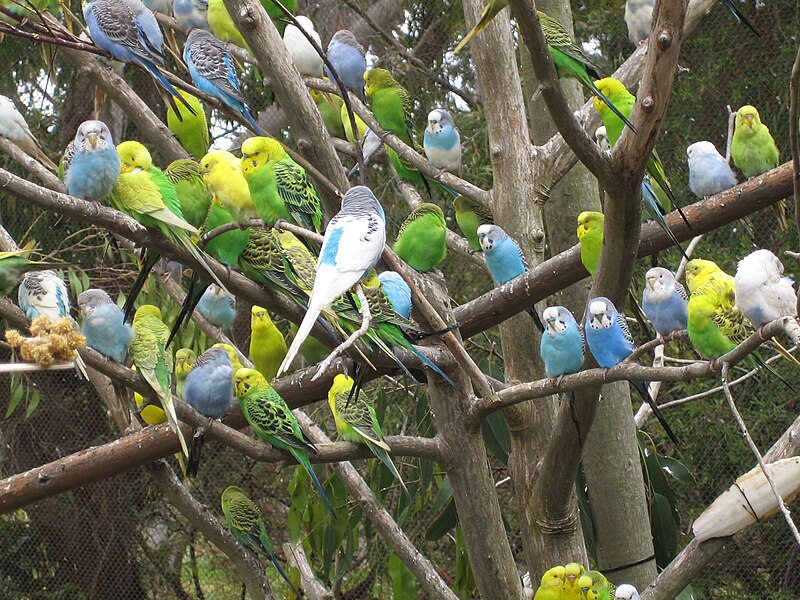Parrots use a wide range of postures when communicating with one another and with their owners. Understanding the meaning of your parrot’s body language will simplify interactions with your pet, and is also important in assessing its health. Today we’ll look at puffed feathers – a behavior which can have several very different meanings, and so must be judged in the context of the surrounding circumstances.
Temperature
Parrots, and all birds for that matter, puff up their feathers in an effort to keep warm. The layer of air trapped within the feathers and warmed by the parrot’s body provides amazingly effective insulation. If you watch native birds during cold weather, you can readily observe this behavior. A bird’s internal temperature is much higher than our own, averaging 106-110 F, and so many species (but only a few parrots!) easily tolerate frigid weather.
Puffed feathers can, oddly enough, also indicate that your parrot is too warm. In this case, the feathers may be flared to a greater degree than when cold temperatures are involved, and the wings may be held out a bit from the body. When very hot, the parrot may open its beak and pump the throat rapidly, a behavior known as gular flapping.
Aggression
 Like many animals, parrots that feel threatened will attempt to make themselves appear larger…flaring their feathers and sometimes spreading the wings. The head feathers may be raised quite high, even among species without crests (the “head display kings” are the cockatoos and hawk headed parrots; please see photo). Aggressive parrots will also stare at the threat – you may notice the eye’s pupil widening as well – and may snap their beaks or scream.
Like many animals, parrots that feel threatened will attempt to make themselves appear larger…flaring their feathers and sometimes spreading the wings. The head feathers may be raised quite high, even among species without crests (the “head display kings” are the cockatoos and hawk headed parrots; please see photo). Aggressive parrots will also stare at the threat – you may notice the eye’s pupil widening as well – and may snap their beaks or scream.
A normally friendly bird that suddenly begins exhibiting this behavior, especially if it does so as you approach, may be masking an injury. Anticipating pain, the bird is warning you off and so should be checked carefully. Sudden aggression may also arise as a result of hormonal changes associated with sexual maturity, or because the bird is jealous of attention being given its favorite person by another pet or individual.
Sickness
Sick or injured parrots, and females having difficulty passing eggs, will sit, sometimes on the cage floor, with their feathers puffed out and the body held in a “hunched” position. The eyes may be closed or partially closed as well. As it is in a bird’s “best interests” to hide any symptoms of illness (predators single out sick and injured individuals as prey), parrots exhibiting such dramatic signs of illness should be seen by a veterinarian right away.
Further Reading
Parrot sounds also convey a great deal of information; to learn more, please see my article What is My Parrot Saying?
Umbrella Cockatoo image referenced from wikipedia and originally posted by Benjamin Graves
 That Bird Blog – Bird Care and History for Pet Birds
That Bird Blog – Bird Care and History for Pet Birds



 on hand has often prevented minor mishaps from turning into disasters. Supplements that aid in preventative health care are also essential. Today I have assembled a list of products that parallel those used in public aviaries, and which should be every private bird keeper’s possession.
on hand has often prevented minor mishaps from turning into disasters. Supplements that aid in preventative health care are also essential. Today I have assembled a list of products that parallel those used in public aviaries, and which should be every private bird keeper’s possession.
